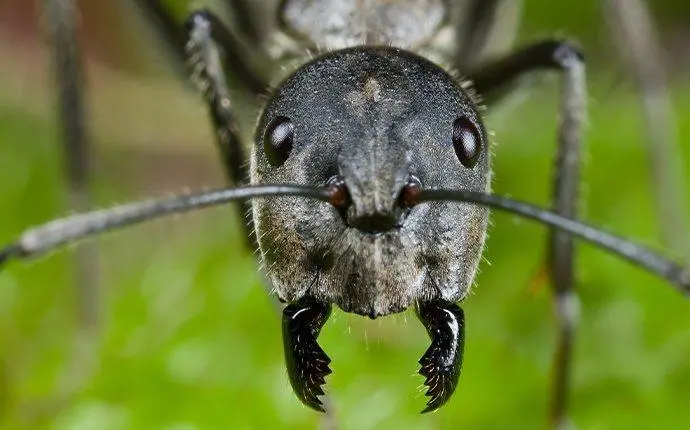Having ants is never a good thing, but large carpenter ants can be especially stressful. These industrious pests like to build their nests in wooden objects and structures and can cause damage to your property. But just seeing a carpenter ant or two might not mean you have an infestation in your home. Here’s how to tell if your Raleigh home has a carpenter ant problem.
What You Should Know About Carpenter Ants
Carpenter ants are the largest home-infesting ant found in the United States, with average specimens measuring 1/2 inch in length. Carpenter ants may appear in a variety of colors from solid black to a combination of red, black, or brown. These pests are especially fond of sweet and protein-rich foods and will eagerly raid your pantry if given the opportunity.
Like certain termites, carpenter ants create their nests in wooden structures. But unlike termites, carpenter ants don’t actually eat wood. Rather, they dispose of the wood material they excavate as they carve their galleries. Carpenter ants won’t cause property destruction on the same level as wood-eating termites, but they can cause damage to already weakened wood around your home.
Signs Of Carpenter Ants
For many Americans, ants are the definition of a nuisance pest. They appear without warning and can be frustratingly difficult to get rid of. Looking out for signs of carpenter ants can prevent an infestation from growing out of control. Keep an eye out for:
- Wood shavings: Piles of grainy sawdust-like material will accumulate as carpenter ants burrow through wood. These piles of wood shavings may appear along window sills and baseboards in the home.
- Winged ants: Spotting multiple winged carpenter ants is a sign of a severe infestation. Winged reproductive carpenter ants are sent out when their home colony has reached a significant size. So, if you see several carpenter ants with wings in your home, you’ve got a problem.
- Rustling noises: The sound of faint rustling in walls or other wooden objects is a sign of carpenter ant activity. These pests work hard to construct their nests and like all construction work, things can get noisy.
How To Prevent Carpenter Ants
Carpenter ants favor damaged, weakened wood to build their nests and don’t typically infest strong, dry wood. But that doesn’t mean they won’t set up shop in your home. Carpenter ants find their way indoors through gaps around doors and windows, cracks in the foundation, and openings around pipes and cables. Overgrown hedges and woody plants making contact with your home can act as a bridge for carpenter ants. And in some cases, carpenter ants may even chew through decaying wood to enter the home. Thankfully, preventing carpenter ants isn’t too difficult:
- Keep the kitchen clean. Don’t leave any food scraps or sugary spills behind for carpenter ants to find. Wipe down the areas where you cook and eat after use. Mop and sweep floors regularly.
- Protect the pantry. Store all pantry foods in sturdy containers with tight-fitting lids. Using glass or metal containers offers the best protection against pest rodents, as well.
- Remove and repair wood. Get rid of any rotting logs or fallen trees in your yard. If wooden segments of your home like window sills, door frames, or siding are damaged, repair or replace as needed.
- Eliminate entrances. Trim back any hedges or overgrown plants making contact with your home. Using silicone caulk, fill in any cracks or gaps around pipes, windows, doors, or along the foundation.
If you’ve noticed signs of carpenter ants in your Raleigh home, contact the experts at Innovative Pest Solutions right away. With our safe and effective residential pest control services, we’ll eliminate your ants and keep them from coming back. Get in touch with us today.






